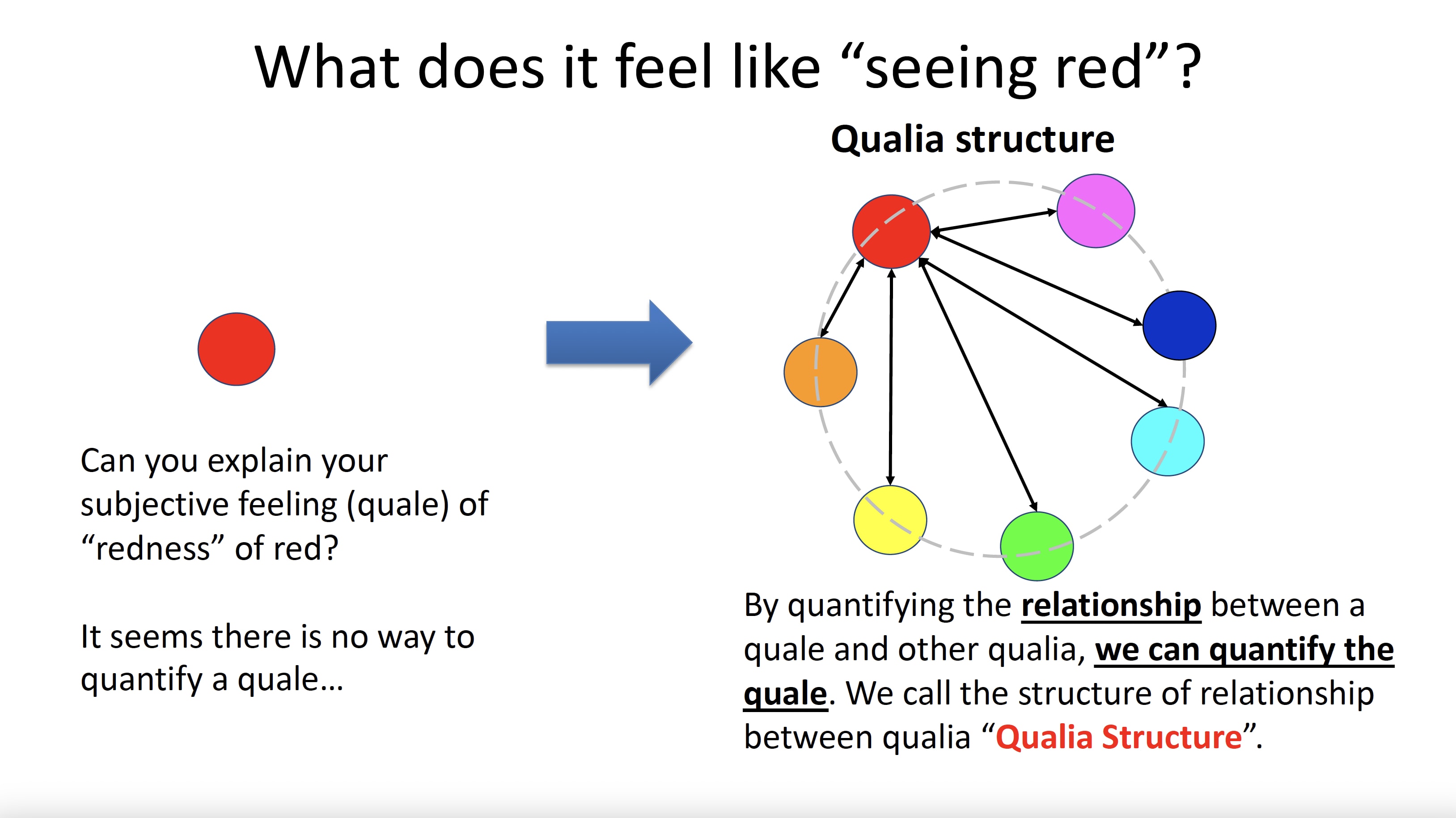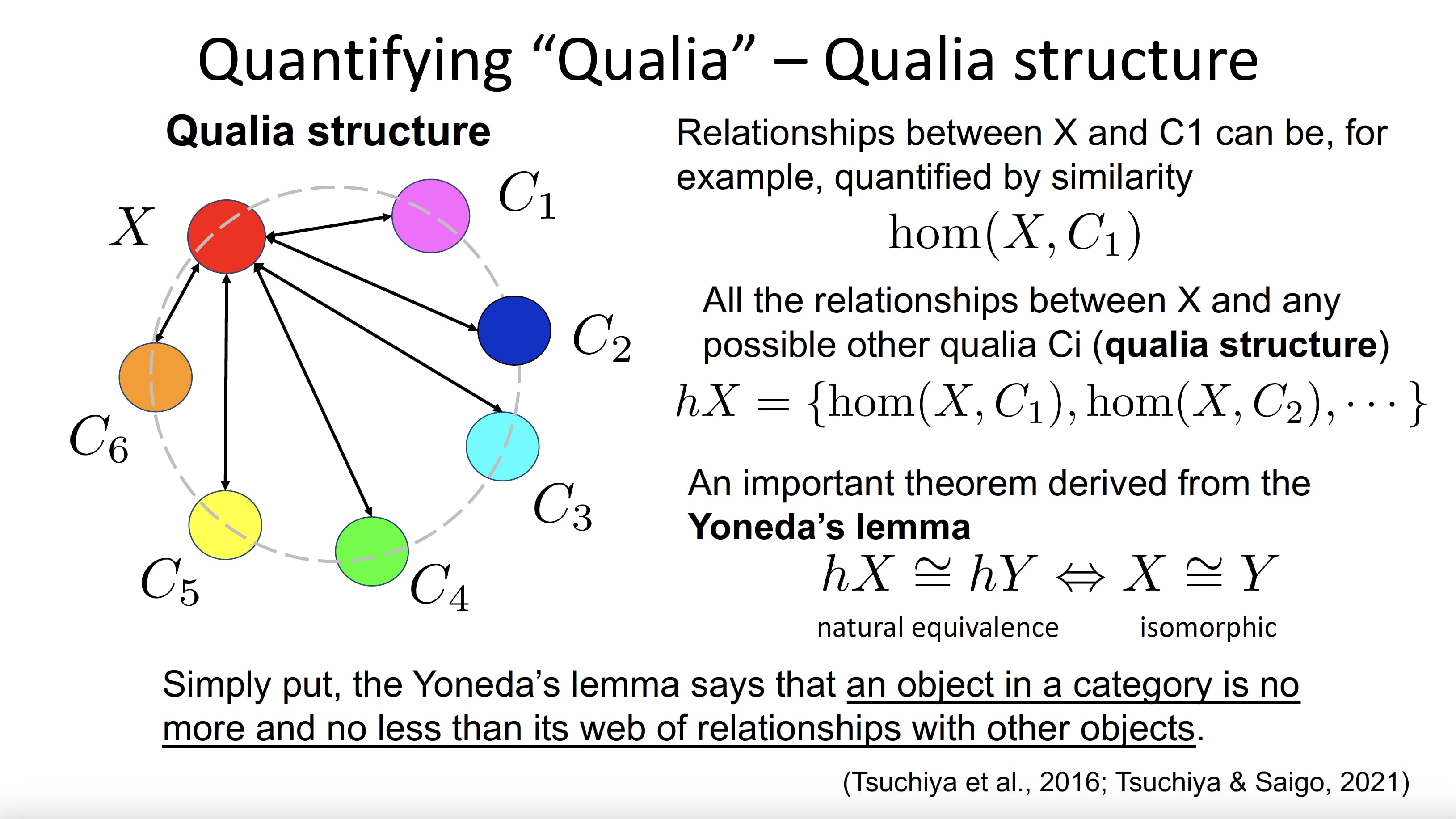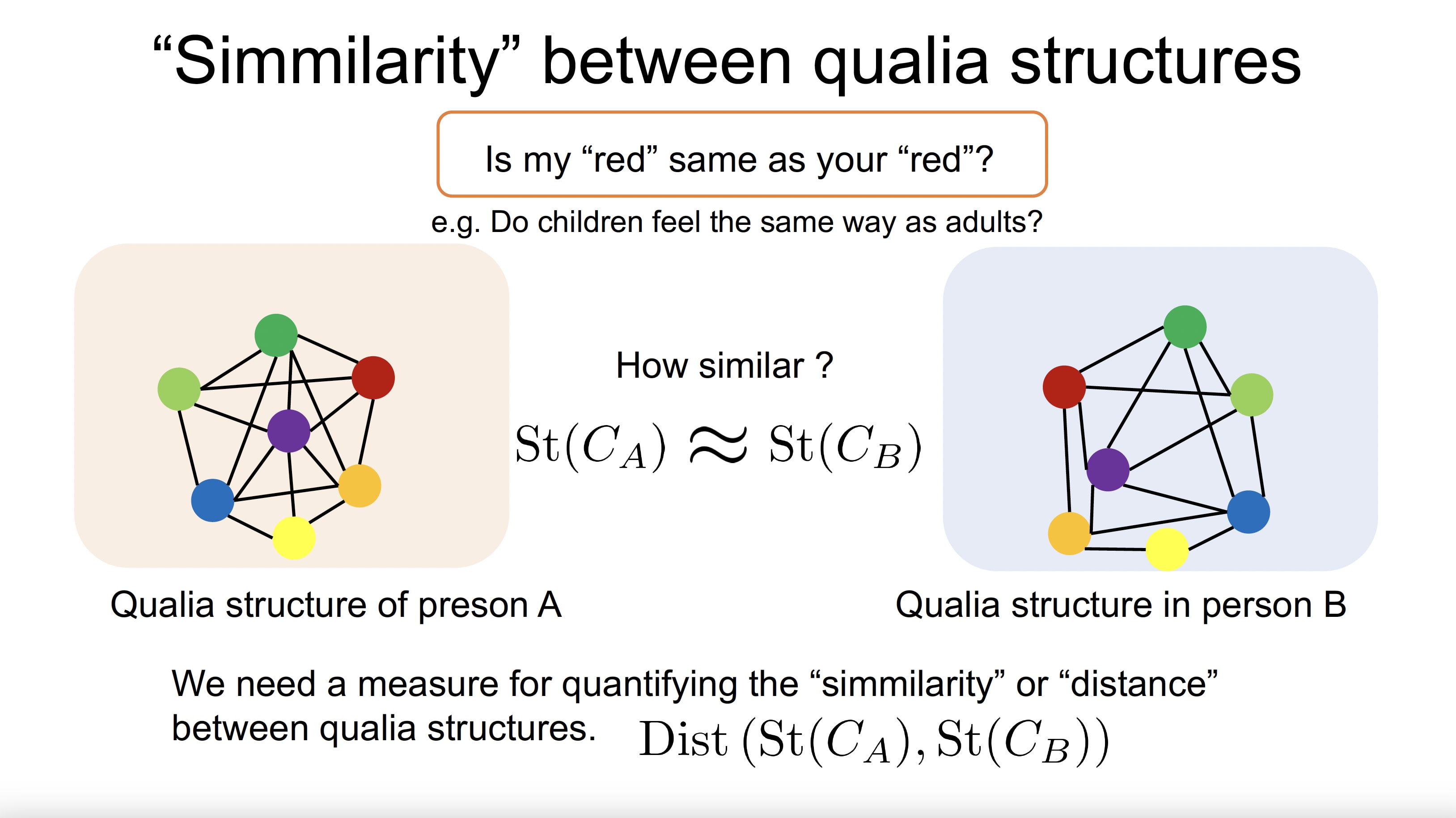Penned by Yusuke Hayashi, an independent researcher hailing from Japan, this article bears no affiliation to the authors whose scholarly works are referenced herein. Demonstrating intellectual autonomy, the analysis presented is unequivocally distinct from the cited publications.Have you ever wondered if the "red" you perceive is the same "red" someone else experiences? A recent study explores this question using a distance measure called the Gromov-Wasserstein distance (GWD).
Is my “red” your “red”?: Unsupervised alignment of qualia structures via optimal transport[1]
Paper (Preprint by Kawakita et al. published in PsyArXiv): https://psyarxiv.com/h3pqm
Slide (Presentation by Masafumi Oizumi at Optimal Transport Workshop 2023): https://drive.google.com/file/d/1Z5QTxayqJkmYyOgirrbJRRflY8HOy8ox/view?usp=sharing
In the paper "Is my "red" your "red"? : Unsupervised Alignment of Qualia Structures by Optimal Transport" (Kawakita et al., 2022) proposes a new approach to assessing the similarity of sensory experiences between individuals. This approach, based on GWD and optimal transport, allows for the alignment of qualia structures without assuming a correspondence between individual experiences. As a result, it provides a quantitative means of comparing the similarity of qualia structures between individuals.



By applying this method, it is possible to compare the similarity of subjective experiences, or qualia structures, between individuals using GWD, a distance measure employed in machine learning research. While this study compares sensory experiences between humans, the same approach could be used to compare the sensory experiences of humans and the advanced AI model, GPT-4. We are now ready to revisit the question posed in the title:
Is "red" for GPT-4 the same as for you?
If asked whether large language models (LLMs) like GPT-4 possess consciousness, the likely answer would be "probably not." However, the method proposed here provides a way to determine whether such models share the same qualia structure as humans.
Consciousness and qualia are closely related. Consciousness is the state of being aware of, perceiving, and thinking about one's surroundings, thoughts, and feelings. Qualia, on the other hand, are subjective experiences and sensations that accompany consciousness, such as the taste of chocolate, the sound of a musical instrument, or the sensation of pain.
Qualia are an essential part of conscious experience, and their relationship to consciousness is of paramount importance. Without qualia, our experience of consciousness would lack a rich, subjective texture and would not be unique and personal. In other words, qualia give our experience of consciousness its unique character and enable us to understand the world around us.
One of the central debates in the philosophy of mind revolves around the nature of qualia and their relation to consciousness. Some philosophers argue that qualia are difficult to study and understand because they cannot be reduced to physical or functional descriptions. Others argue that advances in neuroscience and cognitive science may allow qualia to be explained within a naturalistic framework. The aforementioned studies shed new light on the long-standing controversy surrounding the nature of qualia and its relationship to consciousness.
Recently, Dr. Geoffrey Hinton, one of the pioneers of the deep learning model, resigned from Google, advocating the potential dangers of making AI smarter than humans. In LessWrong, there is a lot of discussion about the safety of AI and the integrity of AI. Throughout this article, I would like to pose the following question to the reader:
If deep learning models acquire consciousness in the near future, can we consider them as alignment targets?
- ^
G. Kawakita, A. Zeleznikow-Johnston, K. Takeda, N. Tsuchiya and M. Oizumi, Is my "red" your "red"?: Unsupervised alignment of qualia structures via optimal transport. PsyArXiv https://doi.org/10.31234/osf.io/h3pqm (2023).
The author of this paper, and a co-worker of his, recently presented this work to my research group, and we discussed implication, also with artificial phenomenology in mind. My impression is that potential implications could be profound if we make some plausible extra assumptions, but that this mostly concerns attempts to decipher biological consciousness (which is my field, so it had me hyped).
Whether you interpret this - very interesting - work to show that specific qualia are experienced very similarly between humans depends on whether you assume the subjective feel of a qualia is fully determined by its unique and asymmetric relation to others. Assuming this is, imho, plausible (I played around with this idea many years ago already), but that has further implications - among others, the one that the hard problem of consciousness may not be quite as hard as we previously thought.
But this paper basically addresses how a specific phenomenal character could be non-random (which is amazing), and in the process, makes inverse qualia scenarios extremely unlikely (which is also amazing) and gives novel approaches for deciphering neural correlates of consciousness (also amazing); it does not, however, answer the question whether a particular entity with this structure experiences anything at all, which is a completely separate area of research (though it is very tentatively beginning to converge). We specifically discussed that it is quite plausible that you could get a similar structure within an artificial neural net trained to reproduce human perceptions, hence building the equivalent of our phenomenological map, albeit without the neural net feeling anything at all, and hence also not seeing red in particular. I am not sure what implications you see for alignment, or where your final question was heading in this regard.
P.S.: Happy to answer questions about this, but the admins of this site have set me to only one post of any kind per day.
Thank you for your kind words, and sorry for not having given proper response yet, am really swamped. Currently at the wonderful workshop “Investigating consciousness in animals and artificial systems: A comparative perspective” https://philosophy-cognition.com/cmc/2023/02/01/cfp-workshop-investigating-consciousness-in-animals-and-artificial-systems-a-comparative-perspective-june-2023/ (online as well), on the talk on potential for consciousness in multi-modal LLMs, and encountered this paper, Abdou et al. 2021 “Can Language Models Encode Perceptual Struct... (read more)